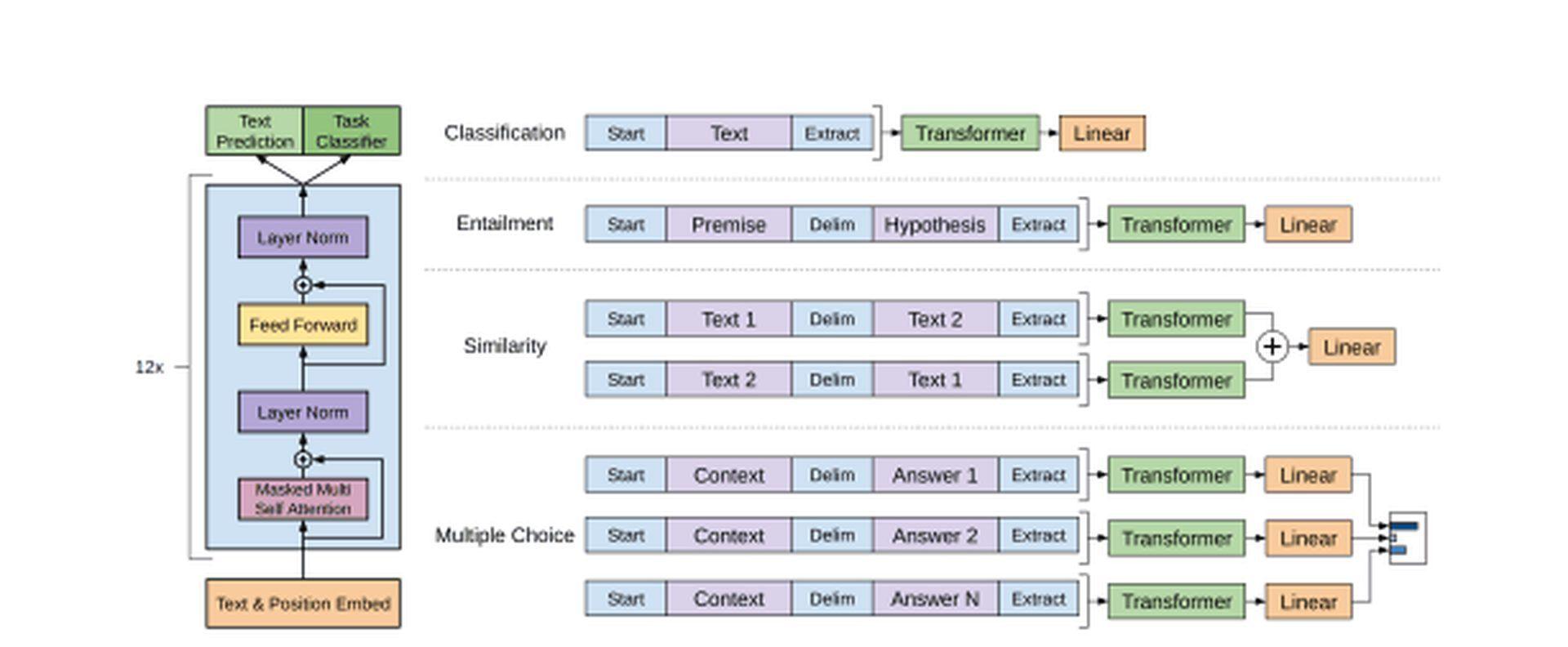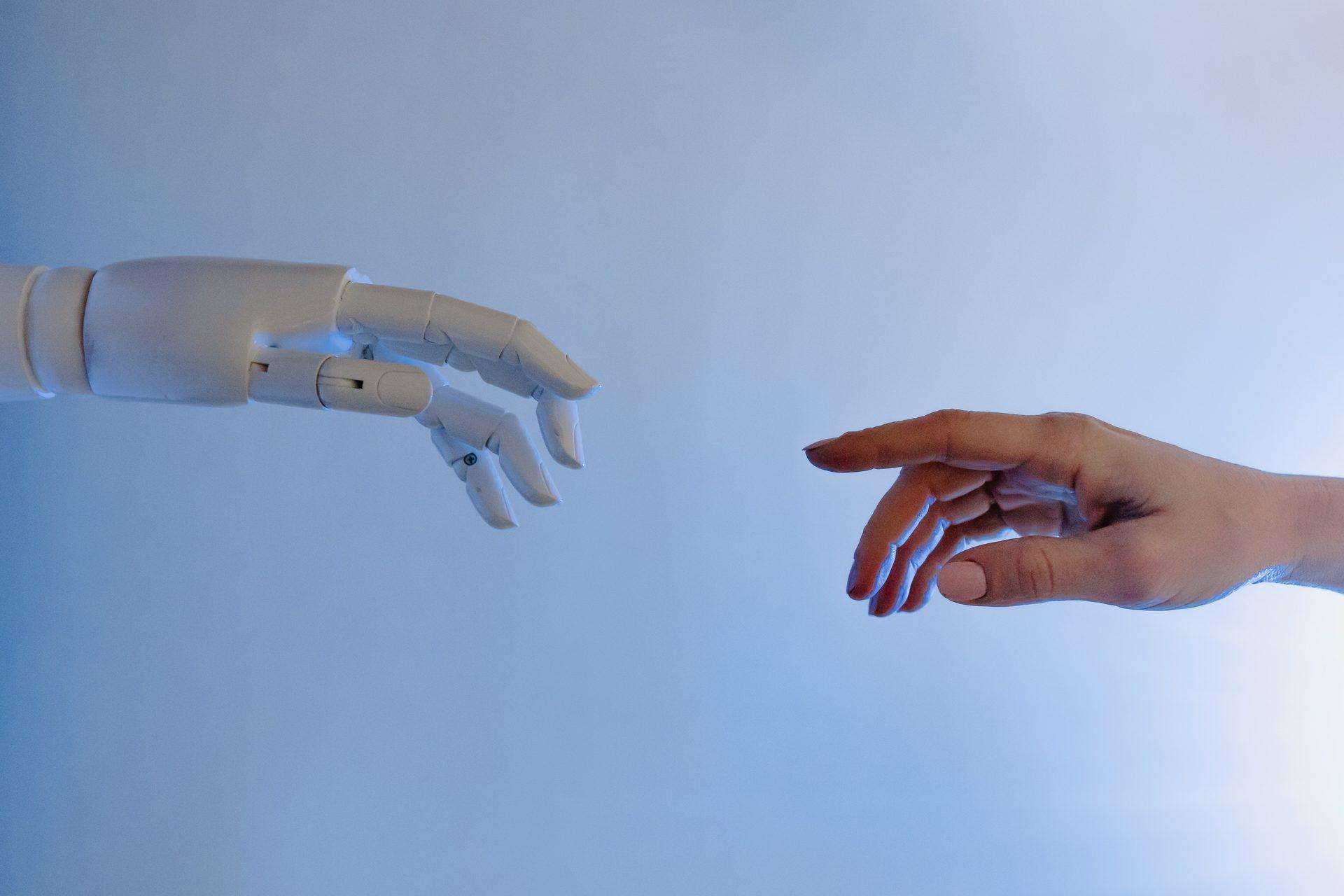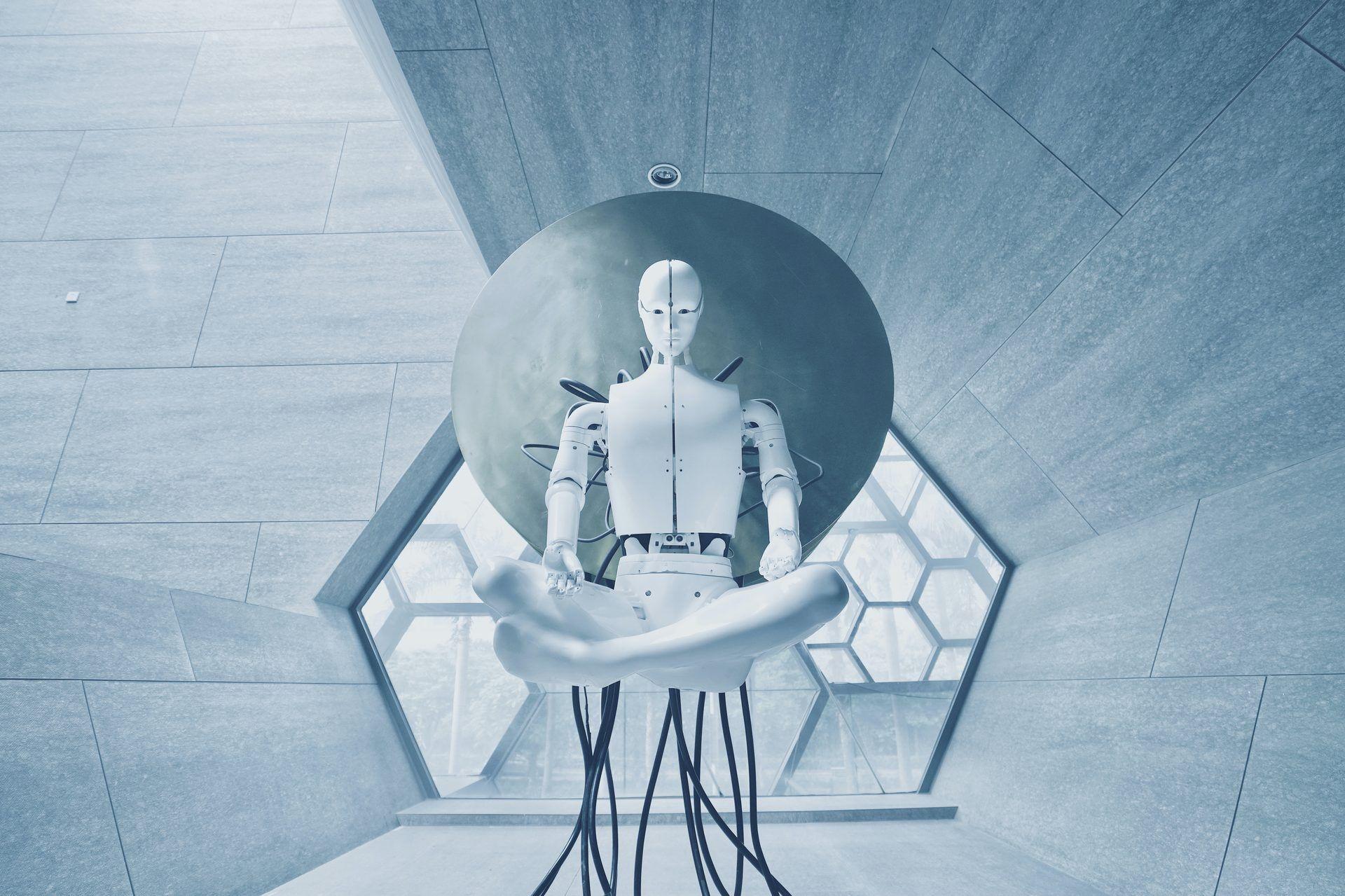OpenAI’s ChatGPT is one of the most popular and advanced chatbots available today. Powered by a large language model (LLM) called GPT-4, as you already know, ChatGPT can talk with users on various topics, generate creative content, and even analyze images! But what if ChatGPT could do even more? What if it could achieve artificial general intelligence (AGI), the ability to understand and perform any task that a human can? What if it can do everything better than you, me, and all of us? Fasten your seatbelts because we will try to find the answer. But first, we need to understand what GPT5 is as a concept.
In this article, we will explain GPT5 release date rumors, its expected features, and of course, AGI meaning that everyone talks about it. Are you ready to sneak peek at the future of ChatGPT?
Everything you need to know about GPT5
First things first, what does GPT mean, and what does GPT stand for in AI? A generative pre-trained transformer (GPT) is a large language model (LLM) neural network that can generate code, answer questions, and summarize text, among other natural language processing tasks. GPT basically scans through millions of web articles and books to get relevant results in a search for written content and generate desired results.
GPT uses AI to generate authentic content, so you can be assured that any articles it generates won’t be plagiarized. Isn’t that pretty useful? Millions of people must have thought so that many better GPT versions continue to blow our minds in a short time. But to understand the future, one must first understand the past.
What are GPT models? Before moving on to GPT5, let’s take a quick look at what previous LLMs had to offer.
- GPT1: OpenAI released GPT-1 in 2018. This generative language model was trained using the massive BooksCorpus dataset, which allowed it to learn a huge range of relationships and acquire extensive knowledge over a wide variety of continuous text and extended passages. This model was a proof-of-concept and was not released publicly.

- GPT2: Later in 2019, OpenAI created a Generative pre-trained Transformer 2 (GPT-2) to create a better language model by utilizing a larger dataset and more parameters. GPT-2 also uses the transformer model’s decoder, like GPT-1. The model design and implementation in GPT-2 represent some of the most notable changes; GPT-2 is 10 times larger than GPT-1 (117 million parameters) and contains 10 times as many parameters and data. This was state-of-the-art in 2019.

- GPT3: GPT3 was where many people met LLMs. It is OpenAI’s big language prediction and generation model and can replicate the original text in large sections. The GPT-3 artificial intelligence language software was a game-changer for OpenAI. In simple words, it’s a program that can whip up paragraphs so fresh and original that nearly sound handwritten. With the help of GPT3, ChatGPT gained 100 million users in just two months, making it the fastest-growing online application in history.

- GPT4: In order to make models more accurate and provide fewer unpleasant or harmful results, GPT4 has been created to enhance their “alignment.” Alignment refers to a model’s ability to follow user objectives.
Announcing GPT-4, a large multimodal model, with our best-ever results on capabilities and alignment: https://t.co/TwLFssyALF pic.twitter.com/lYWwPjZbSg
— OpenAI (@OpenAI) March 14, 2023
But is all this success enough to stop OpenAI? It seems not. Despite the recent release of GPT4, GPT5 rumors are already started circulating.
What is GPT5? GPT5 is a hypothetical AI system that is expected to be the next generation of OpenAI’s GPT series of LLMs. GPT-5 has not been released yet, and there is no official information about its development or capabilities. However, based on some predictions and speculations, GPT-5 might have the following features:
- GPT5 might have 100 times more parameters than GPT-3, which had 175 billion parameters. This means that GPT-5 could have around 17.5 trillion parameters, making it one of the largest neural networks ever created.
- GPT5 might use 200 to 400 times more computing than GPT-3, which used about 3.14 exaflops of computing during training. This means that GPT5 could use up to 1.26 zettaflops of computing, which is more than the combined computing power of all the supercomputers in the world.
- GPT5 might be able to work with longer context and be trained with a different loss function than GPT-3, which used cross-entropy loss. This could improve its ability to generate coherent and relevant text across different domains and tasks.
- GPT5 might be able to reach Artificial General Intelligence (AGI), which is the level of intelligence where an AI system can perform any task that a human can do. Some experts believe that GPT-5 could pass the Turing test, which is a test of whether a machine can exhibit human-like behavior in a conversation.
GPT5 is still a theoretical concept. If it does become a reality, it could have a significant impact on various fields and applications that rely on natural language processing, and the most groundbreaking of all these features will be achieving the AGI level. So let’s find the AGI meaning.
AGI meaning: Meet the holy grail of AI research
What does AGI mean, and how realistic is this claim? AGI meaning refers to an AI system that can learn and reason across domains and contexts, just like a human. AGI (Artificial General Intelligence) differs from artificial narrow intelligence (ANI), which is good at specific tasks but lacks generalization, and artificial super intelligence (ASI), which surpasses human intelligence in every aspect. The idea of AGI meaning has captured the public imagination and has been the subject of many science fiction stories and movies.

What is the difference between AGI and AI? AGI is often considered the holy grail of AI research, as it would enable AI systems to interact with humans in natural and meaningful ways, as well as solve complex problems that require creativity and common sense. One of the key features of AGI meaning is the ability to reason and make decisions in the absence of explicit instructions or guidance.
Another important aspect of AGI meaning is the ability of machines to learn from experience and improve their performance over time through trial and error and feedback from human users.
However, AGI is also elusive and controversial, as there is no clear definition or measure of what constitutes human-level intelligence or how to test it. So, how do we know if something is AGI or not?
One of the most famous tests for AGI is the Turing test, proposed by Alan Turing in 1950. The Turing test involves a human judge who interacts with a human and an AI system through text messages and tries to determine which one is which. If the AI system can fool the judge into thinking that it is human, it passes the Turing test.

AGI or not AGI that is the question
However, the Turing test has been criticized for being too subjective and limited, as it only evaluates linguistic abilities and not other aspects of intelligence such as perception, memory, or emotion. Moreover, some AI systems may be able to pass the Turing test by using tricks or deception rather than genuine understanding or reasoning.
Therefore, some AI experts have proposed alternative tests for AGI, such as setting an objective for the AI system and letting it figure out how to achieve it by itself. For example, Yohei Nakajima of Venture Capital firm Untapped gave an AI system the goal of starting and growing a business and instructed it that its first task was to figure out what its first task should be. The AI system then searched the internet for relevant information and learned how to create a business plan, a marketing strategy, and more.
This kind of self-directed learning and problem-solving is one of the hallmarks of AGI, as it shows that the AI system can adapt to new situations and use its own initiative. However, this also raises ethical and social issues, such as how to ensure that the AI system’s goals are aligned with human values and interests and how to regulate its actions and impacts. One of the key promises of AGI meaning is to create machines that can solve complex problems that are beyond the capabilities of human experts.
The term AGI meaning has become increasingly relevant as researchers and engineers work towards creating machines that are capable of more sophisticated and nuanced cognitive tasks. The AGI meaning is not only about creating machines that can mimic human intelligence but also about exploring new frontiers of knowledge and possibility.
We will find the AGI together
Achieving AGI meaning will require not only technical expertise but also interdisciplinary collaboration and open dialogue between different stakeholders, including researchers, policymakers, industry leaders, and civil society groups.

Is AGI even possible? So far, no AI system has convincingly demonstrated AGI capabilities, although some have shown impressive feats of ANI in specific domains. For example, GPT-4 can generate coherent and diverse texts on various topics, as well as answer questions and perform simple calculations based on textual or visual inputs. However, GPT-4 still relies on large amounts of data and predefined prompts to function well. It often makes mistakes or produces nonsensical outputs when faced with unfamiliar or complex scenarios. But this may change with GPT5.
Some experts argue that achieving AGI meaning will require a deep understanding of the complex interactions between cognition, perception, and action, as well as the ability to integrate multiple sources of knowledge and experience.
Despite the challenges and uncertainties surrounding AGI meaning, many researchers and organizations are actively pursuing this goal, driven by the potential for significant scientific, economic, and societal benefits.
How will AGI change the world? Some experts argue that achieving AGI meaning could have far-reaching implications for our understanding of the universe and our place in it, as it could enable more powerful tools for scientific discovery and exploration. If artificial general intelligence (AGI) can be developed, it has the potential to help us improve ourselves and the world by boosting prosperity, expanding access to education, and expanding the frontiers of scientific understanding. As AI technology continues to advance, the question of how to achieve AGI meaning will remain a key focus of research and development.

We can picture a future in which everyone has access to assistance with virtually any cognitive work thanks to AGI, which would be a tremendous boost to human intellect and innovation.
Yet, AGI might also bring the possibility of abuse, catastrophic events, and societal disruption. Since the potential benefits of AGI are so substantial, we do not think it is feasible or desirable for society to put an end to its further development. Instead, we think that society and AGI developers need to work together to find out how to do it right.
Achieving AGI meaning could require new breakthroughs in areas such as natural language processing, perception, reasoning, and decision-making, as well as more advanced hardware and infrastructure.
However, one thing is sure, GPT5 is expected to be much more powerful than GPT-4 in terms of size, speed, and scope, even if it can’t reach the AGI level. But when will it release?
GPT5 release date
When is the GPT5 release date? The next iteration of OpenAI’s LLM is rumored to be released by the end of 2023. According to developer Siqi Chen, who tweeted about GPT-5 based on his conversations with OpenAI employees, GPT-5 could reach the AGI level and mark a significant breakthrough in AI technology very soon!
i have been told that gpt5 is scheduled to complete training this december and that openai expects it to achieve agi.
which means we will all hotly debate as to whether it actually achieves agi.
which means it will.
— Siqi Chen (@blader) March 27, 2023
So can they really do this? That’s hard to say without seeing GPT-5 in action or knowing how OpenAI will design and evaluate it. Chen himself admitted that his claim was not based on a consensus within OpenAI.
With ChatGPT DAN prompt, you can jailbreak ChatGPT
AI 101
Are you new to AI? You can still get on the AI train! We have created a detailed AI glossary for the most commonly used artificial intelligence terms and explain the basics of artificial intelligence as well as the risks and benefits of AI. Feel free the use them. Learning how to use AI is a game changer!
AI tools we have reviewed
Almost every day, a new tool, model, or feature pops up and changes our lives, like the new OpenAI ChatGPT plugins, and we have already reviewed some of the best ones:
- Text-to-text AI tools
Do you want to learn how to use ChatGPT effectively? We have some tips and tricks for you without switching to ChatGPT Plus! When you want to use the AI tool, you can get errors like “ChatGPT is at capacity right now” and “too many requests in 1-hour try again later”. Yes, they are really annoying errors, but don’t worry; we know how to fix them. Is ChatGPT plagiarism free? It is a hard question to find a single answer. If you are afraid of plagiarism, feel free to use AI plagiarism checkers. Also, you can check other AI chatbots and AI essay writers for better results.
- Text-to-image AI tools
While there are still some debates about artificial intelligence-generated images, people are still looking for the best AI art generators. Will AI replace designers? Keep reading and find out.
- Other AI tools
Do you want more tools? Check out the best free AI art generators.






